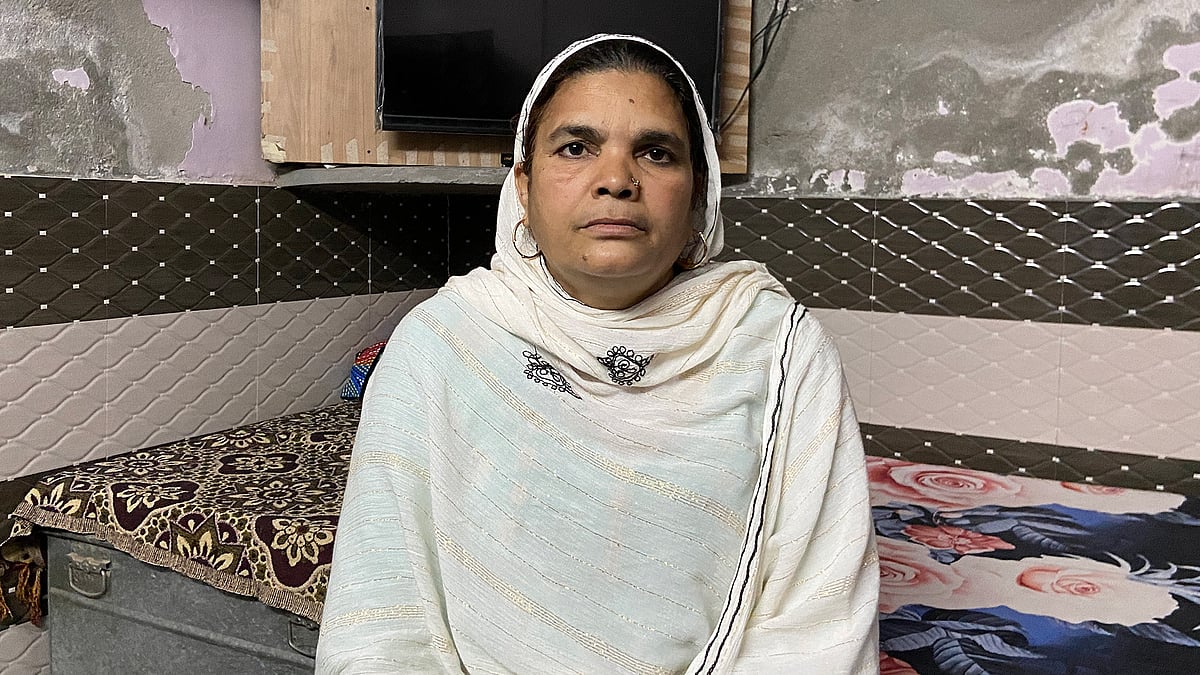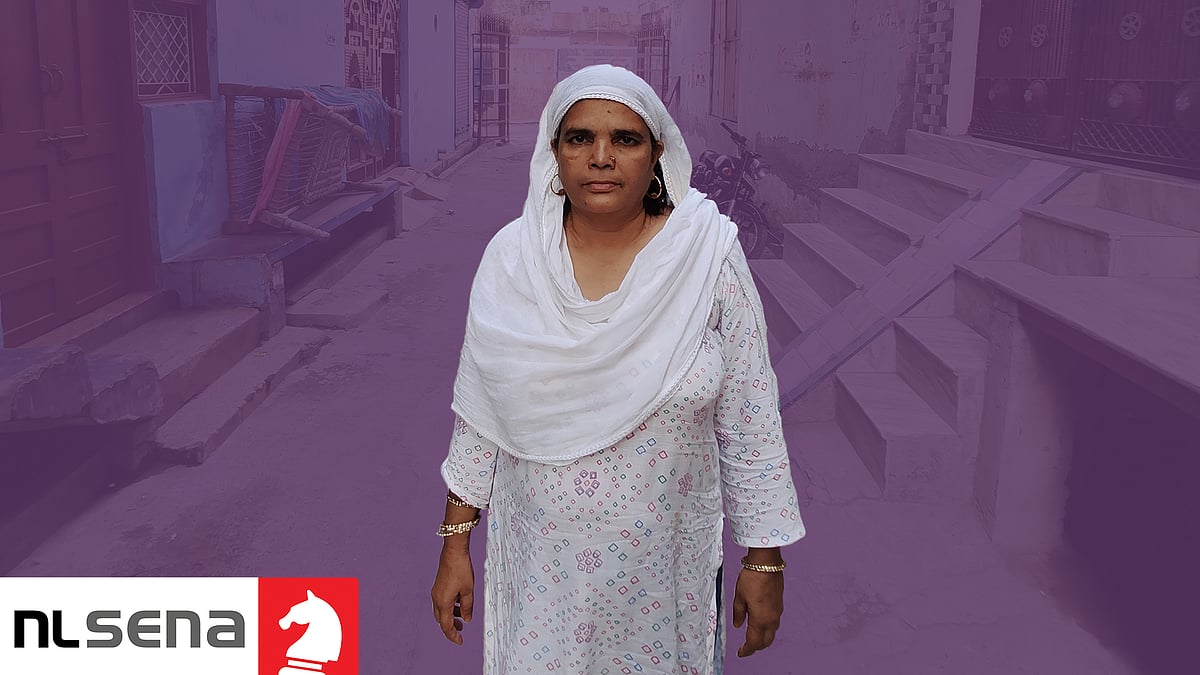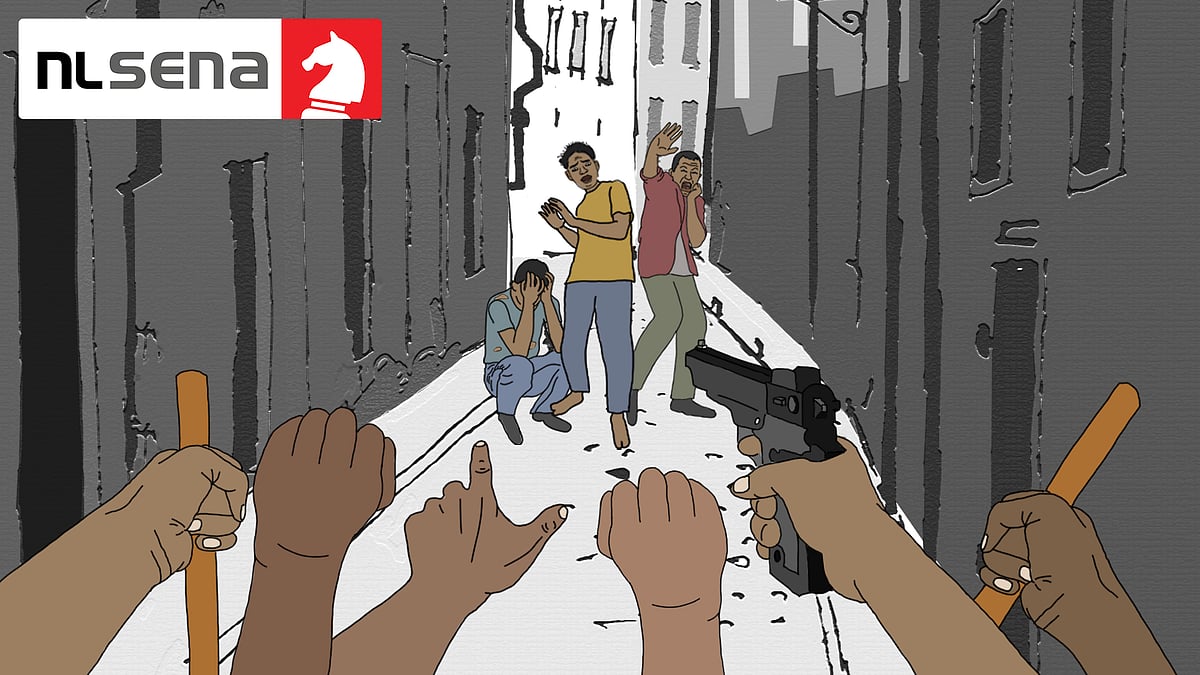Delhi carnage ‘documentary’ claims to show the ‘real picture’. Spoiler alert: It doesn’t
Delhi Riots: A Tale of Burn and Blame, hosted on Voot, interviewed 35 survivors. Only two are Muslim.
Any documentary screened by a political party has no right to claim accuracy. So, it was amusing that Delhi Riots: A Tale of Burn and Blame, directed by Kamlesh K Mishra and produced by Naveen Bansal, begins with a disclaimer that it “tried to depict the facts as those are”.
The film, running into 75 minutes, documents the testimonies of Hindus of northeast Delhi on the communal conflagration last year that killed 53 people. Though Muslims are the documentary’s primary targets, the disclaimer adds that it has “no intention to hurt, malign or defame any individual, community, religion or other such group/identities.”
The film, hosted on Voot, a OTT platform owned by Viacom 18, was screened at M2K cinema in Delhi’s Rohini on Tuesday, with chief guests Kapil Mishra, the Bharatiya Janata Party leader accused of inciting the violence, and Adesh Gupta, the president of BJP in Delhi.
Over 200 people attended the event, most of them saffron scarf-sporting male party workers.
“I’m here to see Mishraji,” said attendee Pradeep Kumar, 26, a resident of nearby Rithala. “He’s the main attraction.”
The event was scheduled for 10 am, but was delayed by more than an hour because chief guest Gupta arrived late. In the meantime, party workers busied themselves by taking selfies with Mishra, who was seated just beside the exit, while the auditorium played the song Ice Cream by pop band Blackpink.
“Come a little closer 'cause you looking thirsty,” the lyrics boomed as attendees greeted each other with “Jai Shri Ram”. “I'ma make it better, sip it like a slurpee.”


The anti-Muslim spin
The documentary, well-shot but shabbily edited, is a Hindutva redux on the Delhi violence for the visual medium. The theory it sells was once limited to BJP press releases, deplatformed books, and police chargesheets: that the carnage was a “pre-planned” and “premeditated” conspiracy by Muslims, some complicit and others misguided, to embarrass the Narendra Modi government the day US president Donald Trump visited the capital.
It paints those who participated in the protests against the Citizenship Amendment Act and the National Register of Citizens as “anti-Hindu” and “anti-India”.
Despite this, the documentary got safe publicity in the Print. A copy in newswire agency ANI said that the film “sought to capture the real picture of violence, first hand account of eyewitnesses and the ‘agenda and propaganda’ that triggered mindless violence”. In an interview to the New Indian Express, director Kamlesh Mishra said that the film is “reliable” and that he tried his “best to bring out the real picture”.
Interestingly, the documentary does not spare the media. Clips from NDTV, Al Jazeera and the Wire are included to demonstrate how the media conjured “narratives”.
“This media, or rather a racket, I call them, have connections outside,” says journalist Sarjana Sharma, one of the five journalists in the film. “They have a modus operandi. They plan things out in foreign universities and float narratives in the international media.”
The filmmakers interviewed 60 people for the documentary, and only four are Muslims. There are 35 riot victims in it, of which two are Muslims, with a combined screentime of less than a minute.
According to the Delhi police, of the 53 dead, 40 were Muslims.
The consequence of this disparity is toxic. Shot through the perspective of Hindus of Northeast Delhi, the film caricatures Muslims as uncouth, cunning and over-breeding good-for-nothings who are inclined to violence and want to dominate neighbourhoods by harassing and ousting Hindus.
“We do not trust any Mohammedan now,” says Bhai Saheb, a man assaulted in the violence. Journalist Sharma describes how Muslims use riots to overtake neighbourhoods because it “brings down property rates and drives out Hindus“. At the screening, there was applause when Shilu Shastri, a Bhajanpura resident, said that the country needs a population control law to rein Muslims in. “Wherever these people grow, there is a riot,” she said, as the audience cheered.
Moreover, the credit roll of Delhi Riots: A Tale of Burn and Blame shines light on the social background of the crew that worked on the documentary: mostly upper-caste Hindus and not a single Muslim. Dissenting voices – anti-CAA protesters, independent observers, or anti-establishment opinions – are entirely absent, limiting the venture to a stale, simplistic, one-sided story. If anything, the state is a significant presence in the documentary, since it features SN Srivastava, Delhi’s commissioner of police, two joint commissioners, and a deputy commissioner who was assaulted in the violence.


The mission to misinform
The documentary offers dollops of misinformation. It quotes a social worker, one Anju Pandey, who claims that 165 homes of Hindus were damaged in the carnage. Atul Kumar Gupta, who was shot during the violence, claims that Hindus were assaulted in greater numbers. Neither of them cite any source. The filmmakers did not bother to cross-check it either.
These run contrary to facts, which the documentary claims to champion. An affidavit filed by the Delhi police in the Delhi High Court last year shows that the carnage took a greater toll on the Muslim community. The police traced the ownership of 108 of the 185 houses that were damaged in the violence, and 90 belonged to Muslims. Additionally, of 468 arsoned shops, the police could categorise only 316, and 250 belonged to Muslims.
However, the total figures carried in the affidavit had errors of addition.
According to the Wire, of the 473 injured mentioned in the police document, “going by the names, Hindus account for 216, or 45%, while Muslims account for 257, or 55%.”

There is also dishonesty when it comes to presenting credentials. Monica Arora, who fought the 2003 Delhi assembly election on a BJP ticket and is associated with the Rashtriya Swayamsevak Sangh, is presented as “advocate, Supreme Court” in the film. Arora authored a terrible book on the carnage last year, titled Delhi Riots 2020: An Untold Story, which was reviewed by this reporter.
In the film, Arora insinuates that activist Khalid Saifi, an accused in the violence, raised money from “Muslim countries” and handed it over to former Aam Aadmi Party councillor Tahir Hussain before the violence. This money, she adds, was later distributed among anti-CAA rioters. At this point, the documentary disingenuously shows a clip of men distributing cash to women dressed in burkhas. An Alt News fact-check had traced the video to a relief effort in Northeast Delhi from February 28, 2020.

In another instance, social worker Pandey says that Muslim rioters burned down the slums of blacksmiths during the violence. The film then shows us footage of a raging fire in a settlement, with a man trying to put it out. This is misleading. The video was actually shot by journalist Raghu Karnad, and it captures the arson perpetrated by Hindu mobs on Muslim houses in Gokulpuri. I know this because I was there too, and reported on it.

If director Mishra had any interest in digging out facts of the carnage, he would have at least been even-handed in weighing grave allegations. Early in the documentary, Navneet Gupta, the director of a coaching centre in Yamuna Vihar, alleges that while most institutes in the neighbourhood handed over CCTV footage stored in their DVR systems to the police for investigation, one Khan Coaching Centre did not. The insinuation is that Muslims wanted to protect their own.
The director did not interview anyone at Khan Coaching Centre to verify this allegation.
“Our data only lasts 15 days, after which it is erased automatically,” AS Khan, the owner of Khan Coaching Centre, told Newslaundry. “But no one ever came to us to demand our DVR footage after the violence. The police have not approached us in a year since then.”
Response from the director
Newslaundry reached out to Voot and Mishra for comments on the documentary. We will update this story when Voot responds.
Mishra readily conceded that Muslims are underrepresented in the documentary.
“I made this film after I observed that a section of the national media and international media carried one-sided coverage of the riots as they were happening,” he said. “The overarching narrative was that Muslims are victims of the violence. But no one tried to understand the pain of Ankit Sharma or Dilbar Negi’s families. The media skipped this. I tried to bridge that. My documentary shows a part of the story, but the truth is whole.”
This is not entirely true. As Newslaundry had reported last year, Ankit Sharma’s murder was covered extensively by news channels, and most of it was not factual.
About the bile against Muslims, Mishra said that they were expressions of those affected, and a filmmaker has the right to show them. “A journalist might tone it down, or present it differently, but a director can show such raw emotions,” he said.
But journalist Sarjana Sharma, I pointed out, who expounded wacky theories on how Muslims overtake neighbourhoods, was not a victim of the violence. So why did it get space in the film?
“That is Sarjana Sharma’s observations as a journalist. It is possible that she has observed Delhi for years,” Mishra said. “Perhaps one should delve into how when [Muslim-dominant] pockets come up in cities, Hindus are displaced. This can be another project. But if I had set out to verify Sharma’s comment, the documentary would have digressed.”
Next, I asked the director whether he spoke to anyone at Khan Coaching Centre to cross-check the allegations made against it in the documentary. “I tried to meet someone there but I couldn’t,” Mishra said. “They were unreachable and his institute was closed.”
On questions about misinformation, the director said that the relief effort video might have been misleading, but the information that rioters were paid were true. “You can check in the Delhi police charge sheets in the case,” he said, adding that it is possible that he also picked the wrong video to show burning slum settlements. “Since you are reviewing the film, you feel free to point it out,” he said.
 Arif gets bail in all Delhi carnage cases. But poverty keeps him in jail
Arif gets bail in all Delhi carnage cases. But poverty keeps him in jail Delhi carnage: How Mohammad Arif turned Hindu and lynched his uncle
Delhi carnage: How Mohammad Arif turned Hindu and lynched his uncle Who killed Maruf Ali in Delhi's communal carnage? Fellow Muslims, police say
Who killed Maruf Ali in Delhi's communal carnage? Fellow Muslims, police say